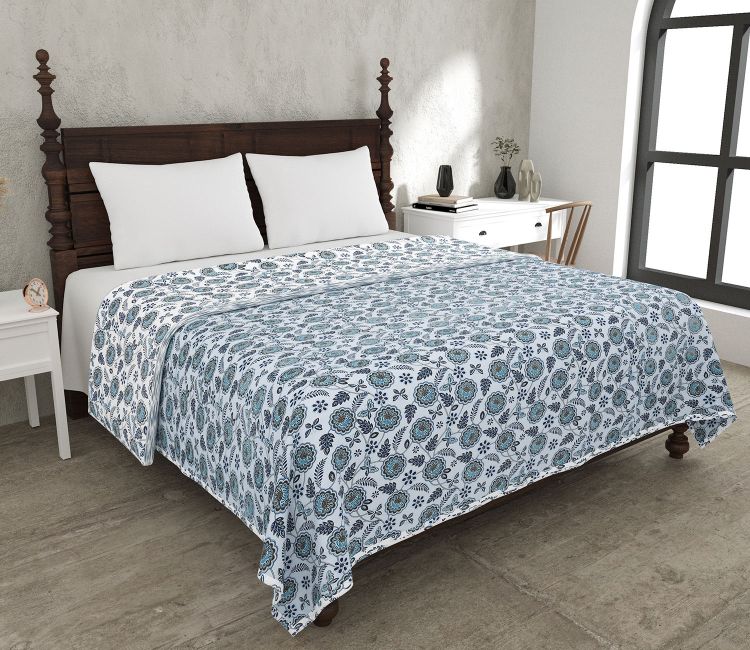When shopping for bed linen, you’ve likely come across the term "thread count" and heard it associated with quality and comfort. But what does thread count really mean, and does a higher count always equate to a better product? This guide will explain thread count and its impact on bed linen quality, helping you make an informed choice for your bedding.
What is Thread Count?
Thread count refers to the number of threads woven into one square inch of fabric. This count includes both horizontal (weft) and vertical (warp) threads. For instance, a 300-thread-count sheet has 150 threads in each direction within one square inch.
Common Thread Count Ranges:
- 200-400: Basic, standard quality
- 400-600: High quality, with a smooth, soft finish
- 600+: Premium feel, but may be misleading if threads are "doubled up" (more on this below)
Does Thread Count Matter?
In many cases, thread count can influence the feel and durability of bed linens, but it’s not the sole indicator of quality. Factors like fiber quality, weave, and finishing processes are equally, if not more, important than thread count alone.
The Truth Behind High Thread Counts
High thread counts above 600 may seem luxurious, but sometimes manufacturers achieve these counts by twisting multiple yarns together in a process called "multi-ply." While it raises the thread count number, it doesn’t always enhance the fabric's softness or durability.
- Single-Ply vs. Multi-Ply Threads: Single-ply threads use one continuous thread per weave, creating a lightweight, soft feel, while multi-ply threads can be heavier and stiffer.
- Optimal Range: Most high-quality sheets fall between 300 and 500 thread count. Within this range, natural fibers like cotton, especially Egyptian or Pima, are durable, soft, and breathable without being over-engineered.
Thread Count by Fabric Type
Different materials require varying thread counts for optimal comfort:
- Cotton: For Egyptian or Pima cotton, thread counts between 300 and 500 are ideal for softness and breathability.
- Linen: Linen sheets typically have a lower thread count (80-200) due to thicker fibers. A lower count doesn’t compromise quality but instead emphasizes linen’s natural airy feel.
- Polyester Blends: Blended fabrics can have high thread counts, but they may feel less breathable. A 200-400 thread count is often sufficient for a smooth texture.
Other Factors That Impact Bed Linen Quality
- Fiber Quality: High-quality cotton like Egyptian and Pima offers natural softness and durability. Cheaper cotton may be woven with a high thread count but can feel coarse over time.
- Weave Type:
- Percale: Percale is a plain, grid-like weave that creates a crisp, breathable sheet, ideal for warm sleepers. Percale sheets are often best between 200-400 thread count.
- Sateen: Sateen weave has a silky finish, created by weaving more threads over than under. It’s softer, with a slight sheen, and ideal for cooler climates. A 300-600 thread count is suitable for sateen.
- Finishing Processes: Quality finishing processes such as mercerization, which strengthens and gives cotton its sheen, also contribute to the softness and durability of bed linen.
Choosing the Right Thread Count for Your Needs
- Consider Climate: If you sleep hot or live in a warm climate, opt for a breathable, lower thread count sheet in percale or linen.
- Balance Comfort and Durability: A thread count between 300-500 is ideal for most users, offering both durability and comfort.
- Check Fabric Quality: Rather than just looking for a high thread count, check the fiber type, weave, and overall construction. Egyptian or Pima cotton in a 300-500 thread count will feel more luxurious than a cheaper cotton at 800+.
Conclusion
While thread count does play a role in bed linen quality, it’s not the only factor to consider. A moderate thread count in high-quality cotton or linen will generally feel better, last longer, and breathe more effectively than an ultra-high thread count made from lower-quality materials. By focusing on the quality of the fabric and appropriate thread count for your needs, you’ll enjoy a more comfortable and restful sleep experience.





Comments